Rome’s historic water shortage plugging the noses of some of city’s famed cisterns
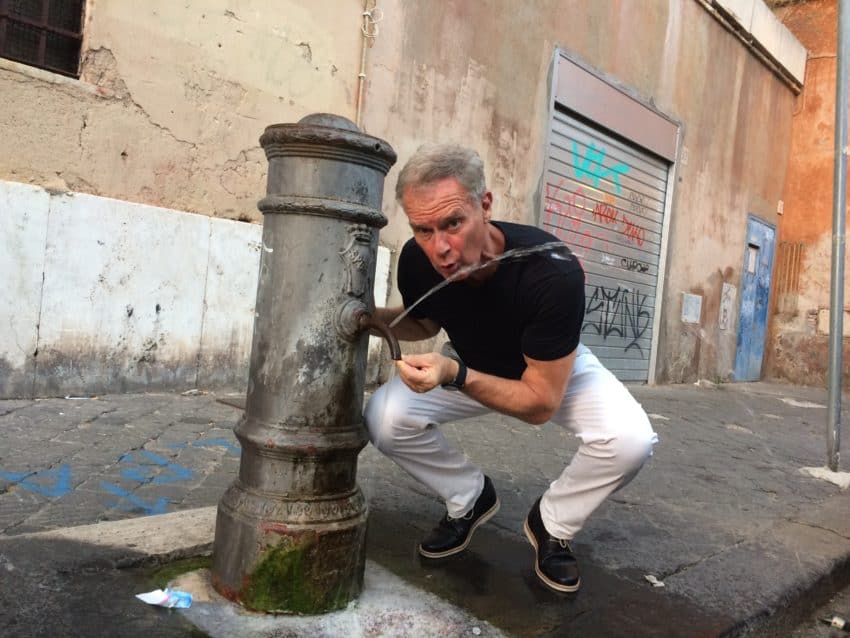
I have a weird confession to make. I never drank water until I moved to Rome.
I’m serious. Water was too boring. It had no flavor. Why drink water when you can drink Gatorade? For 45 years, all through my years playing sports as a kid and traveling the globe as an adult, I lived on soft drinks, citrus fruit and artificial thirst quenchers with more synthetics than polyester pants. Back home in the West, I always had a gallon jug of Gatorade in my refrigerator. I drank milk as a thirst quencher. Water? Why bother?
In 2001 I moved here to Rome on a budget. Gatorade is hard to find here. If I drank milk to quench my thirst in the steaming Rome summer I’d be broke by soccer season. I considered living on nothing but wine. Nope. You can’t earn street cred in Rome when you pass out in a piazza at 3 in the afternoon.
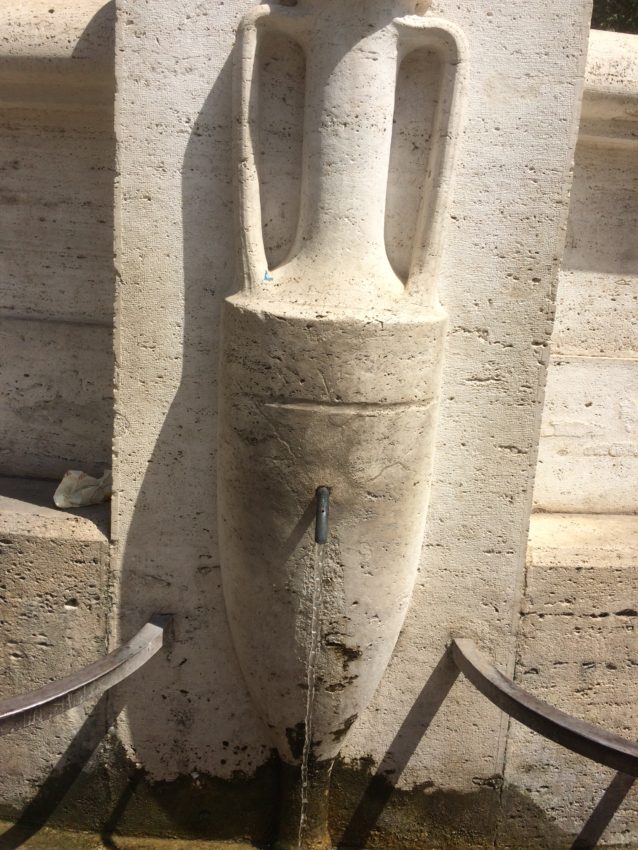
Then I discovered something. All around Rome were these fascinating, cast-iron fountains with curved nozzles that poured out a continual stream of cold water. Each nozzle had a little hole on top. You closed the spout with your finger and the water shot out of the hole like a normal drinking fountain.
And the water was fantastic. Clean and cold, very cold, even in the middle of July.
I never went thirsty in Rome and I saved a fortune. Everywhere I went I could see the constant gurgle of these cisterns, known here as nasoni, from the Italian word “naso” for “nose,” as the cisterns look like great big schnozzes.
Then I read somewhere that Rome’s water had been rated No. 1 among urban centers in the world. I filled a water bottle with tap water, put it in the refrigerator and waited four hours. What came out was the best water of my life. I’d stand at the refrigerator and chug half a liter bottle of the glorious, ice-cold fluid, much to the disgust of my then girlfriend.
I finally became hooked on what has kept the rest of mankind alive since history’s first drop of sweat. When I returned to Rome for my second stint 3 ½ years ago, I immediately bought two liter glass bottles, one to chill while I drank the other. I drink two liters a day, three in the summer. The nasoni satiates me when out of the house.
Now as Rome melts into its cobblestones and my water intake skyrockets, everyone in Rome is facing a crisis: water shortage. More than 400 of our beloved nasoni have been turned off. The city has about 2,500 nasoni, meaning 16 percent of these cute, ingenious, thirst-quenching little piles or iron are now dry. We barely avoided water rationing which would’ve turned off water for eight hours a day all over the city. The Vatican turned off 100 of its fountains, including the famous Bernini fountain in the middle of St. Peter’s Square.
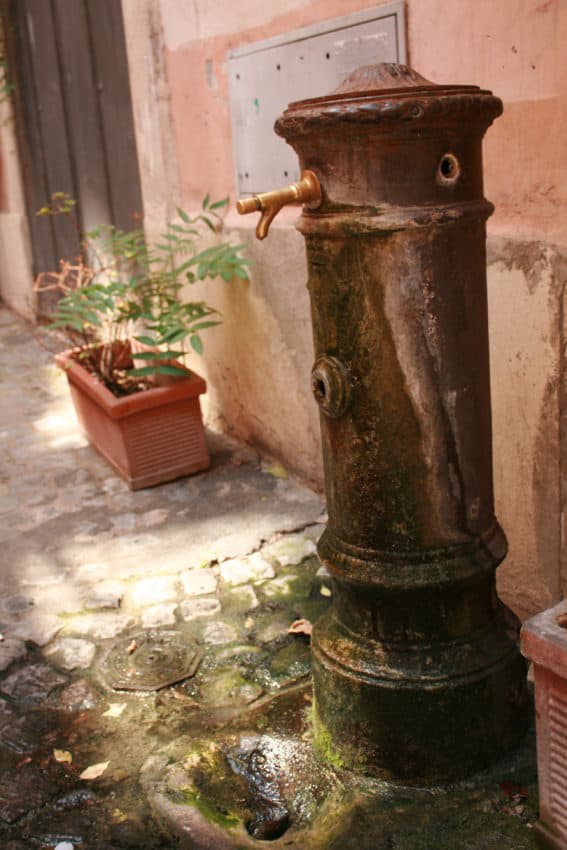
Excuse all 1.5 million of us Rome residents if we’re sweating this summer for more reasons than one.
Hey, Republicans. You think climate change is a hoax? Italy had its second hottest spring and its driest in 60 years. It hasn’t rained in Rome in more than two months. From last year rainfall has dropped 80-85 percent. Rivers in the industrial Po Valley around Turin are parched. Italy, the world’s leading exporter of tomato products, has seen a 90-percent drop in production. Olive oil and (GASP!) wine production has dropped 15-30 percent. Agriculture officials say the damage to crops around Italy has totalled 2 billion euros.
Hospital admissions in Italy are up 15-20 percent for heat-related illnesses and at least three people have died from the heat. Florence’s Uffizi Museum closed Friday when the air-conditioner broke down due to the lack of water in the dried-up River Arno.
Vittorio Marletto, an agricultural meteorologist for the Regional Environment and Energy Agency of the Emilia-Romagna region in Central Italy, was quoted as saying, “For years we have seen progressively diminished precipitation and rising temperatures due to the changing climate. The lack of snowpack in the Apennine mountains to recharge the aqueducts is particularly dramatic.”
Scientists say that the death toll in Europe from heat will go from 3,000 a year to 152,000 by the end of the century.
Not that it’s hot now, but I walked by the famous statue of Julius Caesar near the Forum and in his outstretched hand toward the masses he’s now holding a Red Bull. It’s so hot, the pope indeed walked on water. He walked across the Trevi Fountain — in shorts and flipflops. Actually, I made that up. You can’t get in — or on — the water in Rome fountains anymore. Two tourists were recently fined 900 euros for washing their feet in a fountain; an Italian was arrested for swimming in Trevi — nude.
By the numbers, Rome is nothing like St. Louis, Orlando or Houston. Last week it topped out at 104 although there were forecasts of 106. The humidity didn’t go over 45 percent. But it feels hotter than the numbers. Romans hate air-conditioning. I don’t remember ever being in a home with AC. My girlfriend will turn on a portable electric fan when I start panting more than her cat. My penthouse apartment has three sets of windows on opposite sides. Opening them on my top floor brings in a nice breeze off the Tiber River below. But some apartments feel more appropriate for African violets or prisons in Central American jungles. It is steaming.
This is one time of the year here when water is more important than wine. Limiting its use had the city on the edge of a sweaty revolt.
The embattled mayor, 39-year-old Virginia Raggi, just slightly more popular than Nero, curbed a probable palace coup last week when she killed the idea of water rationing. Yet that still doesn’t solve a problem that could linger for years. The source of this situation isn’t climate change. It’s Rome’s general bureaucratic incompetence. (I write that line so often I should put it on a save/get key.)
Of the 7,000 kilometers of water pipes in the metro area, 2,000 are under repair. The city was wasting 44 percent of its water or 100 liters of water per second. To combat it, they started draining beautiful nearby Lago Bracciano, dropping the water level an astonishing five feet.
Keep in mind that of all of Rome’s great accomplishments — the most powerful civilization in history, more art than any city in the world, pasta amatriciana on a cool fall evening — one of its most underrated is water. The Ancient Romans built aqueducts to carry in water from the hills of Central Italy. About 800 kilometers of aqueducts were built, all with a downhill gradient for the water to flow into the city. They were reconstructed during the 17th and 18th century. Today about half of them are still in use after 2,000 years and they still produce spectacular drinking water. Iceland is said to have the best public water in the world. I spent two weeks in Iceland in May. Its water is no better. Rome’s should be fabulous. Acea, Rome’s water agency, tests 250,000 samplings a year.
Buying bottled water in Rome isn’t illegal. But it should be. Yet when word of the water rationing arose, Romans bought bottled water as if they were boarding an ark.
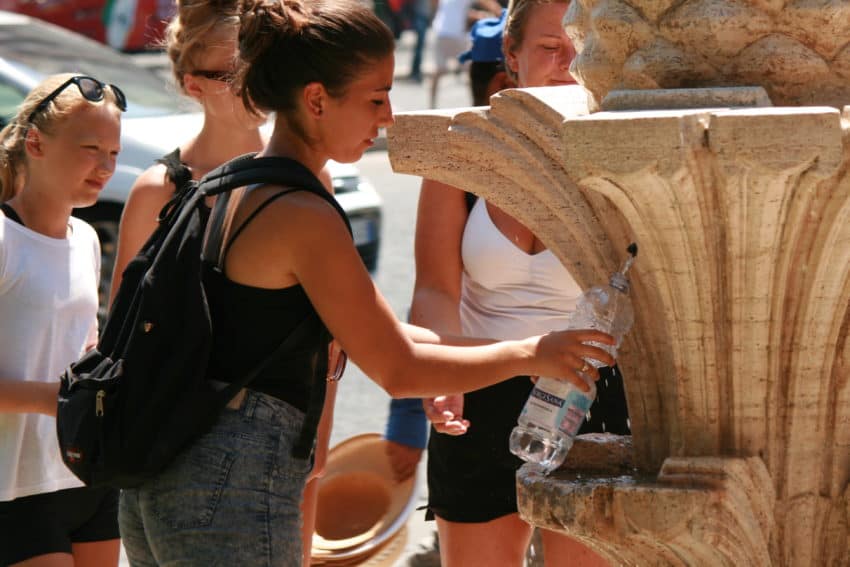
The nasoni are simply the arrival points of water from the aqueducts. Trevi Fountain, basically, is one big cistern. The nasoni were installed in 1874 to help public merchants water their fruits and vegetables, and they became mass produced in the 1920s onward. The water is never wasted. What doesn’t go in your mouth — or all over your face if you’re not careful — carries into reservoirs that water the parks and gardens or is recycled into fountains. Because of the constant flow, the water never stagnates and gets warm. It’s always cold. Tourists and locals alike stand in line to fill their empty water bottles.
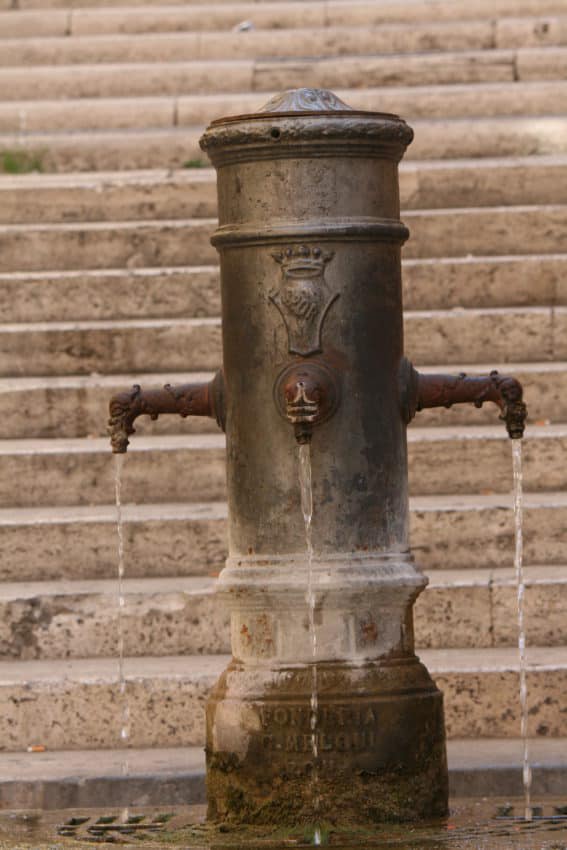
The nasoni are as much a part of Rome’s landscape as churches. Shelley, the great 19th century British poet, wrote, “The fountains are enough to justify a trip to Rome.” Some are famous. One on Via delle Tre Cannelle off fashionable Via Nazionale is taken from the original 1874 design and has three nozzles, not one. A nasone in gritty Pigneto, just east of the Termini train station, is painted in A.S. Roma’s red and yellow colors. In 2005, the city considered getting rid of the nasoni and a massive public outcry quickly killed the discussion.
Rome needs so much: Cleaner streets. Better public transportation. More efficient government. Now it needs something more, something the screams of 1.5 million thirsty souls can’t make happen.
Rain.


August 8, 2017 @ 11:09 am
Great write-up on Rome’s wonderful nasoni. They have them here in Lucca too. And yes, the water out of them is very good. I’m going to share this post on my Paradise of Exiles Facebook page. https://www.facebook.com/ParadiseOfExiles/
August 8, 2017 @ 11:15 pm
Thanks for the love, Chandi. Long live the Nasone!
August 9, 2017 @ 7:41 am
Considering different reasons I’m not able to travel, and because of that I fell in love with your blog that shows us all those different places and facts!
August 9, 2017 @ 9:25 am
I’m so sorry you can’t travel. I hope I can offer some respite from your every day life.
August 9, 2017 @ 9:27 am
Well you already do my friend!